9 Stunning School Gardens to Inspire You This Spring
Even a small school garden can make a big difference.
Help nourish students’ minds, bodies, and hearts this holiday season!
Even a small school garden can make a big difference.
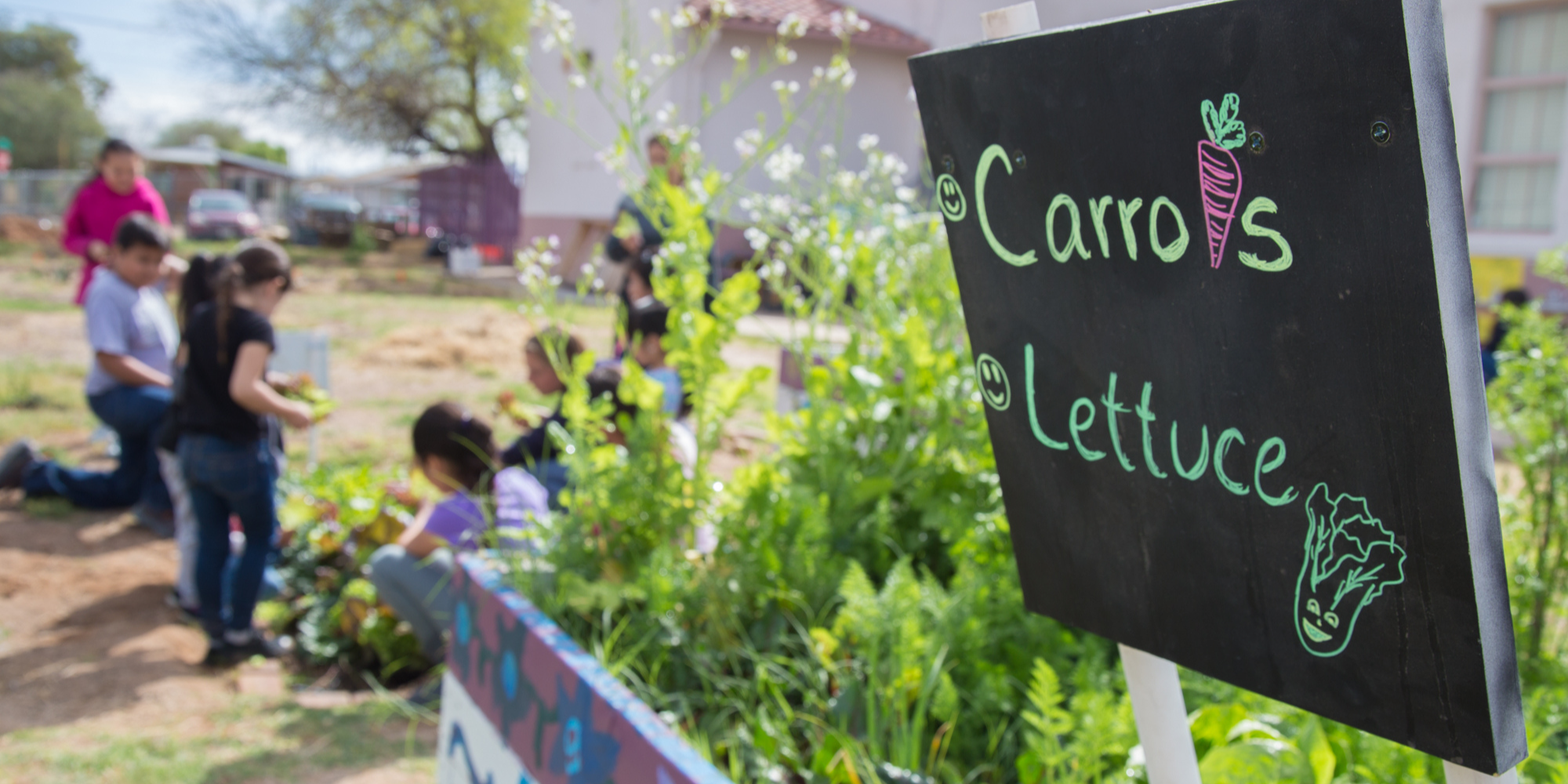
School gardens are incredible places. They provide a place for hands-on learning. They offer a front-row seat to important lessons about food, farming, and the natural world. And they can be sources of produce, herbs, or flowers to nourish communities.
Cultivating school gardens is a core element of how FoodCorps works with schools. In the best cases, those gardens continue to flourish—with help from families and communities—even after our partnership has ended.
FoodCorps members help cultivate hundreds of school gardens each year. School gardens come in all shapes, sizes, and seasons, and we celebrate them all for the ways they support kids and schools.
April is National Garden Month, as great a time as ever to learn about the benefits of school gardens. If you’re looking for inspiration for your own school garden, here are just a few we love.
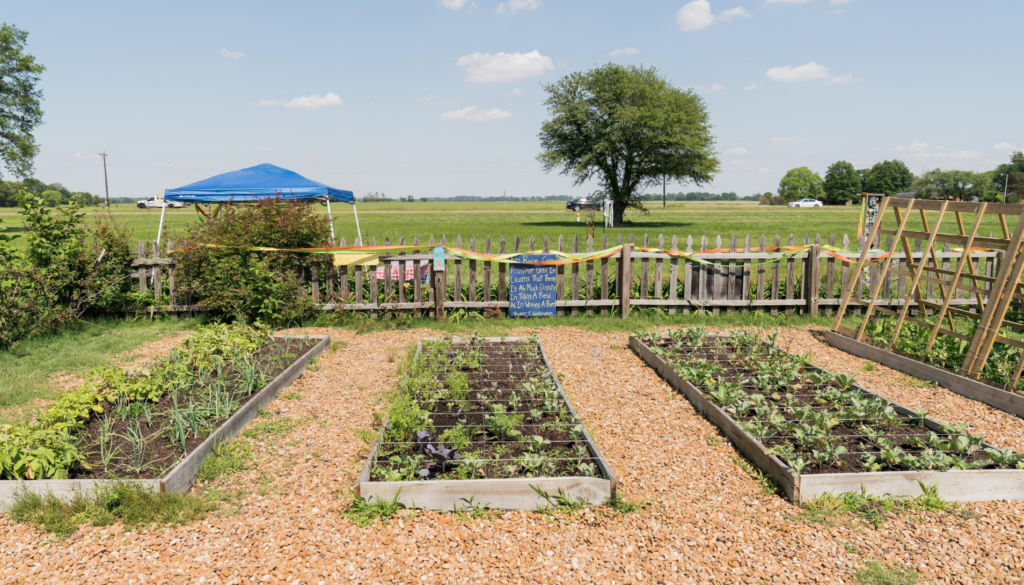
At McEvans Elementary in Shaw, Mississippi, neatly arranged garden beds invite students to walk around and examine plants and insects from different angles. Photo by Steve Ettinger.
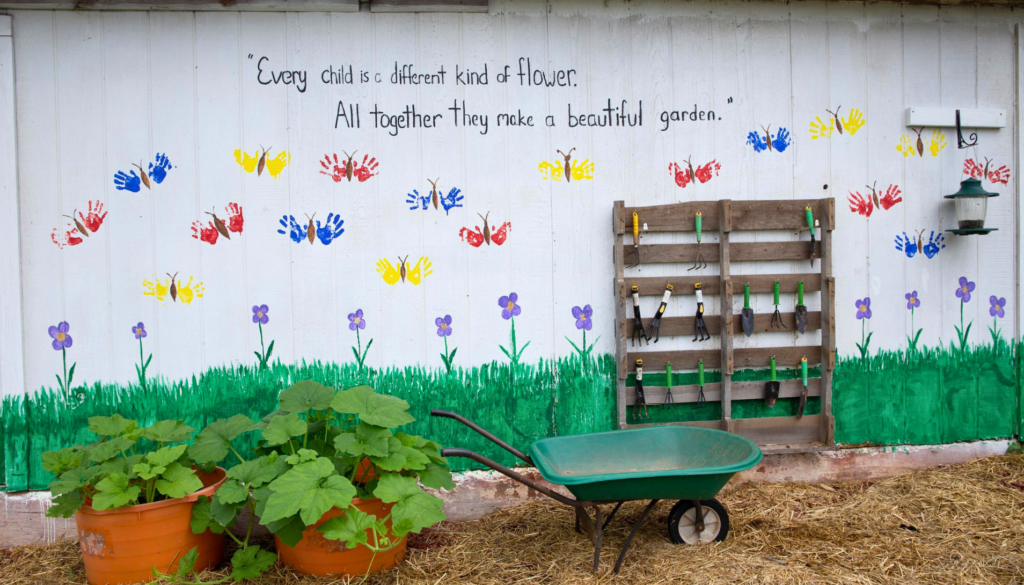
Students helped bring this fence to life with painted handprint butterflies in the garden space at Cedarville Elementary in Cedarville, Arkansas. Photo by Rochelle Li.
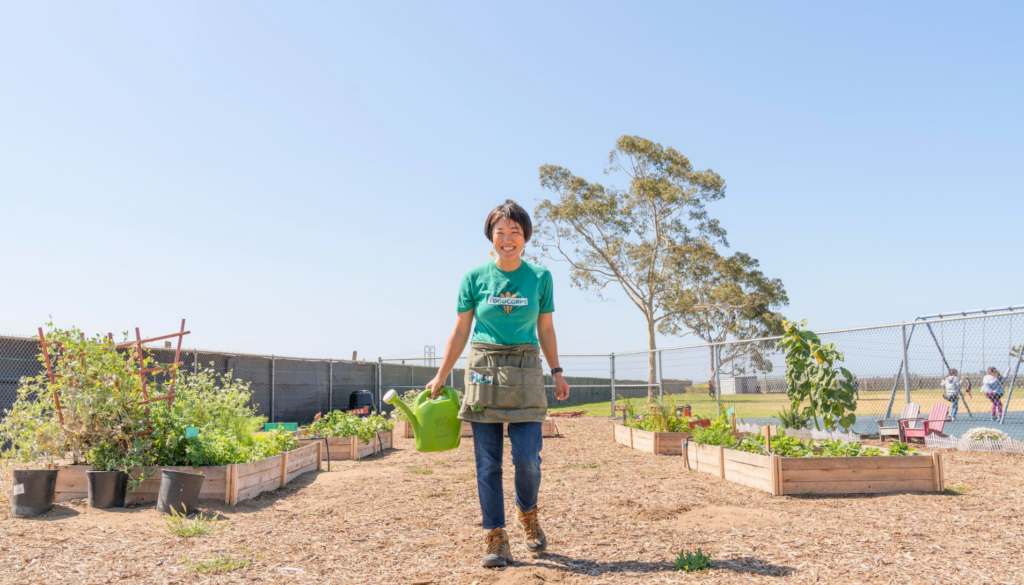
Corps member Katie Kamimoto gives a tour of Mar Vista Elementary’s garden on a sunny day in Oxnard, California.
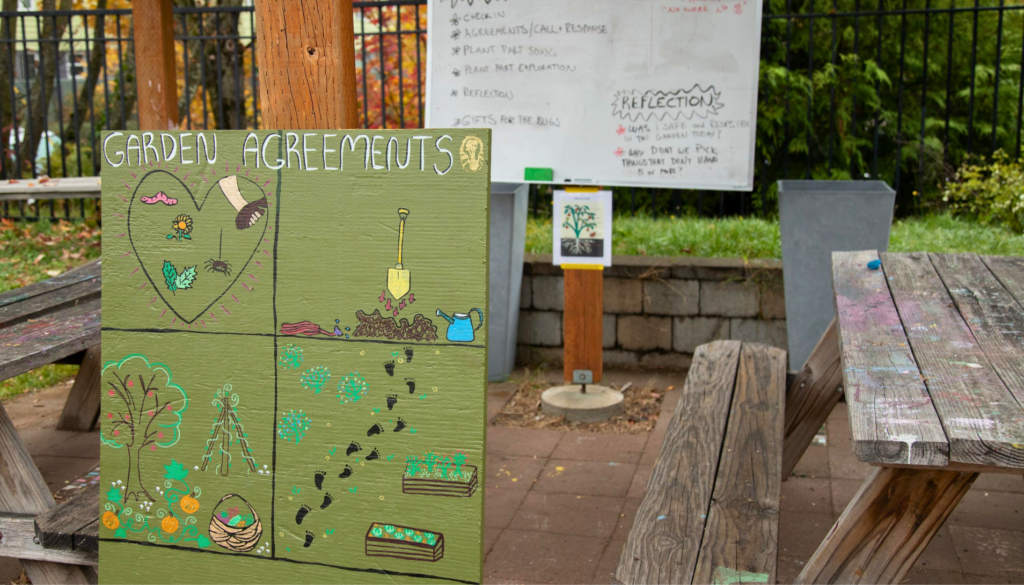
A sign acknowledging collective garden agreements welcomes kids at KairosPDX in Portland, Oregon. Photo by Kayo Okada.
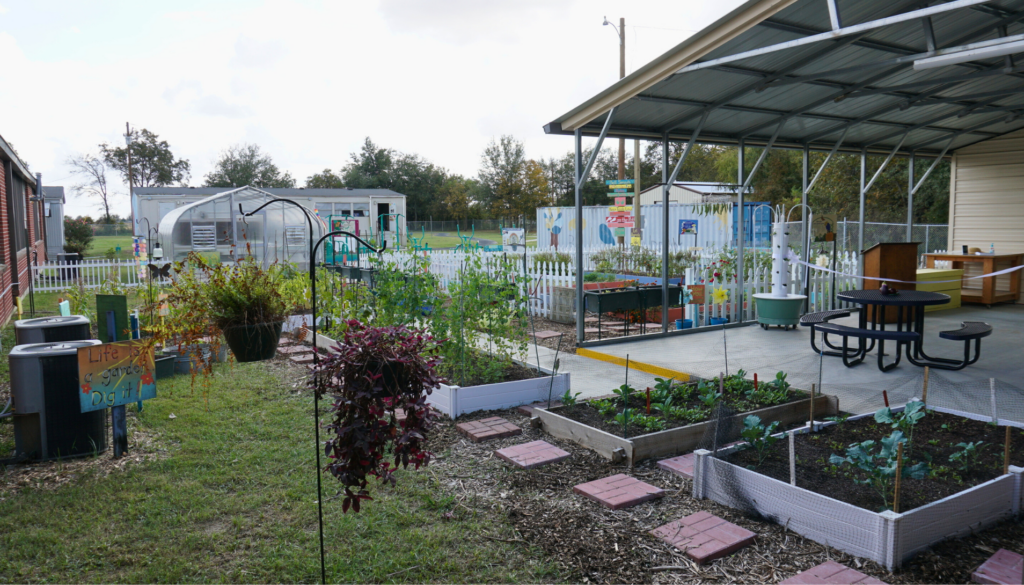
There are all kinds of spaces to learn in this school garden at Bell Academy in Boyle, Mississippi, from a greenhouse to raised beds to a patio area. Photo by Dr. Todd Davis.
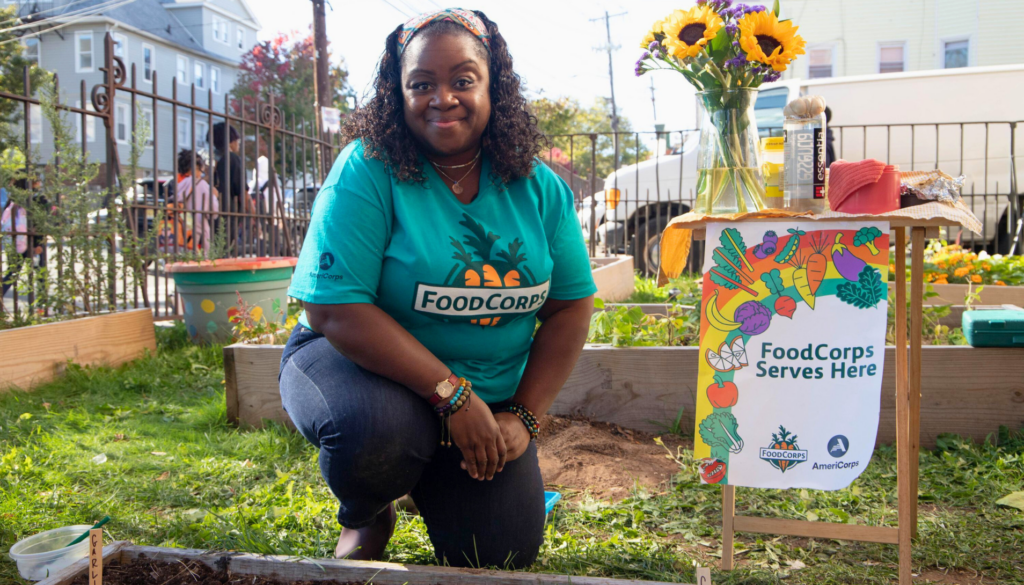
In the garden at Avon Avenue Elementary in Newark, New Jersey, corps member Bridgette Byrd poses after leading students through a lesson about how garlic grows. Photo by Rochelle Li.
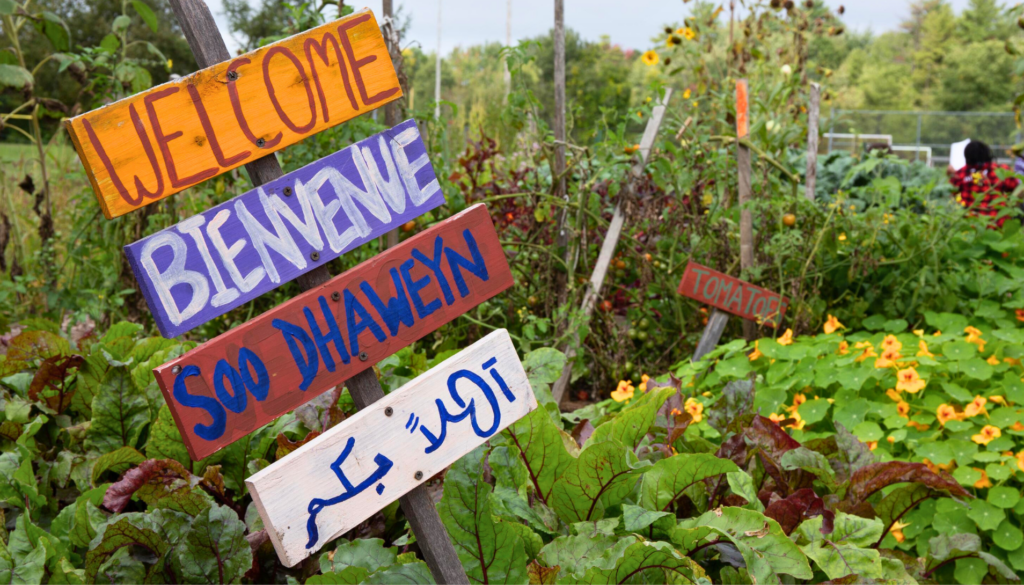
Colorful signage welcomes visitors to the school garden at Talbot Community School in Portland, Maine, where FoodCorps members and students harvest potatoes and other crops. Photo by Rochelle Li.
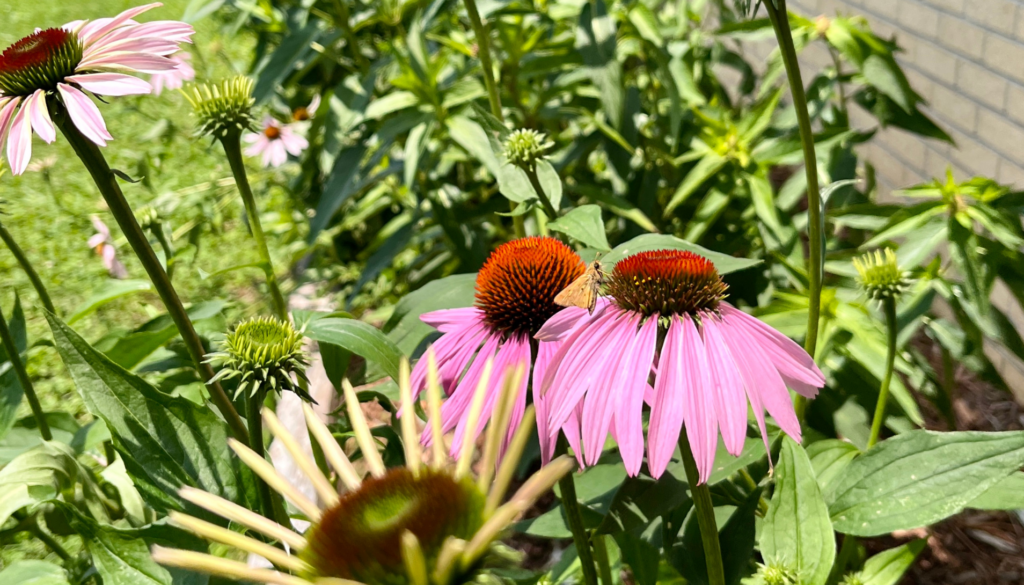
The pollinator garden at Elmdale Elementary in Springdale, Arkansas, welcomes a tiny winged visitor, who helps the flowers grow and thrive. Photo by Julia Nall.
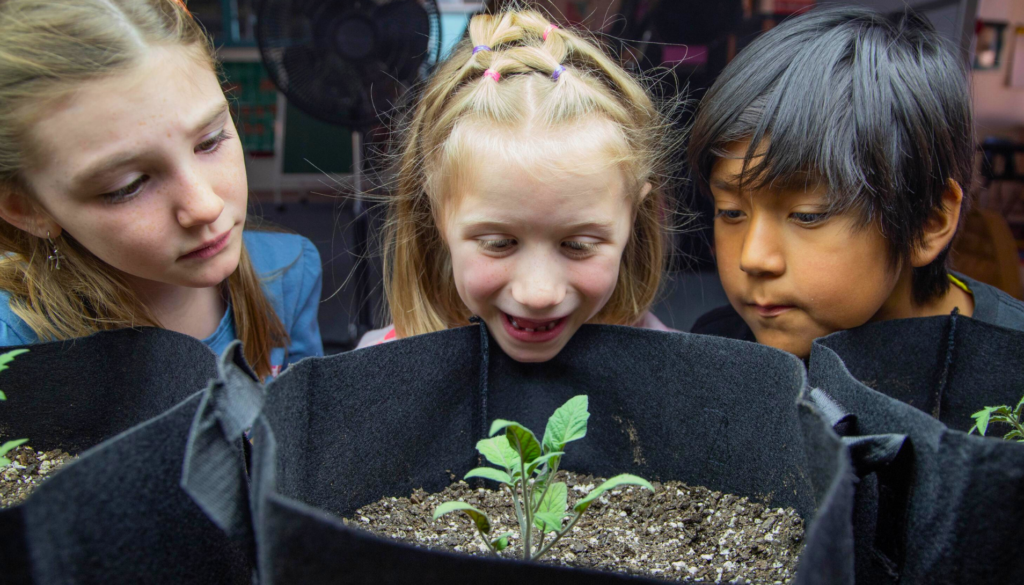
Who says school gardens have to be outdoors? In Farmington, New Mexico, corps member Jojo Reed led students through a tour of Esperanza Elementary’s indoor garden, where new sprouts are blooming with the help of extra light and water. Photo by Rochelle Li.
Ready to learn more about what FoodCorps is growing near you? Sign up for our emails!
Related read: What Makes a Great School Garden? | “School gardens have been around for at least a century, according to the USDA. And they can blossom in all kinds of places: in both cold and warm environments, and in urban, suburban, and rural communities. The crucial ingredient is a group of passionate people—students, teachers, families, and community members—invested in the garden’s success and sustainability.”

5 Awesome Small Businesses by FoodCorps Alums

How to Advocate to Your School Board for Nourishing Food

The Policy Brief: Government Shutdown Edition